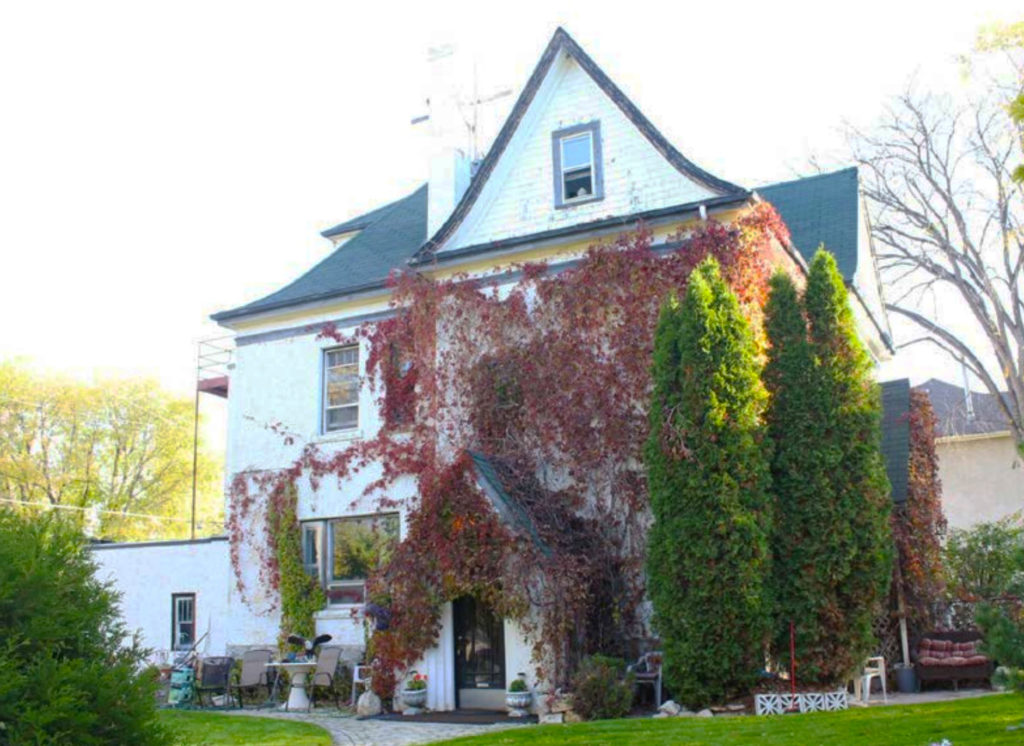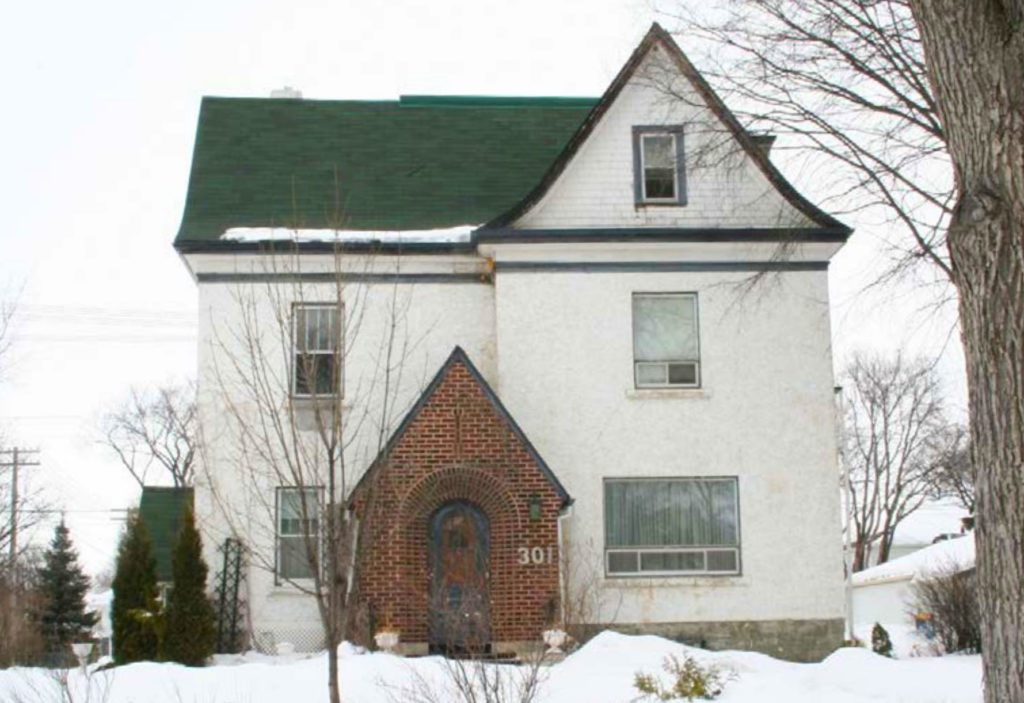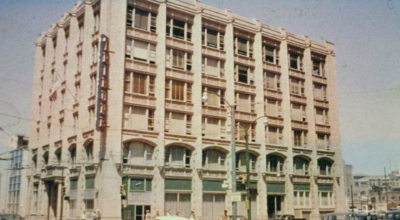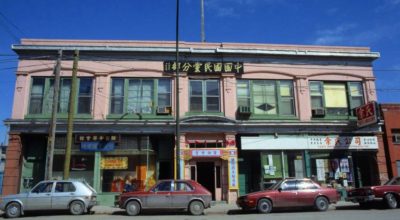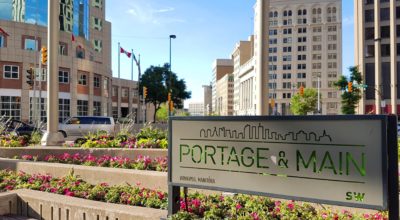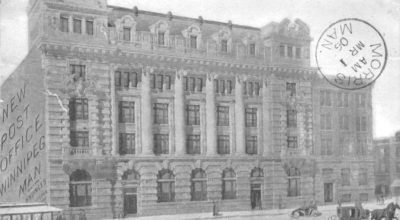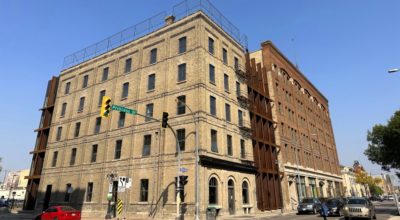
/ Blog
March 25, 2021
Beliveau in Adaptive Reuse: 700 St. Jean Baptiste
For many years, St. Boniface existed as a city entirely separate from Winnipeg. European settlement in the area began in 1818, with the founding of a Roman Catholic mission named after the German missionary Saint Boniface. Not long after, Catholic colonists began to settle nearby and the community began to grow. Maison Béliveau enters the story of St. Boniface nearly a century later, in 1906, when it was built for Hormisdas Béliveau and his family.
Béliveau was a wealthy merchant in Winnipeg by this time. He had moved to Winnipeg from Quebec in 1882, and quickly took a job with wine merchants Richard & Company. After just a decade of work, Béliveau became a partner of the firm in 1892. Over time, Richard & Co., began selling fine cigars and wholesale liquor as well. In 1903, the firm’s name was changed to the Richard-Beliveau Company, and Béliveau himself was the president, manager, and held the controlling interest for many years.
On top of owning a successful wine enterprise, he also owned Fashion Craft, a men’s clothing business, was vice-president of Fashion Craft Manufacturing Company of Montreal, and owned a considerable amount of farmland within Winnipeg.
His home, Maison Béliveau, at 700 St. Jean Baptiste Street was built for himself, his wife, Ernestine Guilbault, and their three children. Béliveau hired American architect Howard Colton Stone to design the house. For a time, Stone was based out of Montreal and from 1904-1907 he had a Winnipeg office. Despite its short three-year operation, Stone designed a number of other Winnipeg buildings including the Bank of Toronto (456 Main Street), and the Walker Theatre (365 Smith Street).
Stone designed the two and a half storey Béliveau house in the eclectic Queen Anne Revival Style, with an asymmetrical facade and sharp angled roofline. Originally the exterior walls were made of brick though they have since been covered with stucco, with the exception of the red bricked entrance. Despite this, the charm of the architecture has not been completely lost, with the large home standing out as an historic landmark at the intersection of St. Jean Baptiste Street and Dumoulin Street. The original interior layout is not known, but it is reasonable to assume that it would have featured a large dining room and parlor, like similar homes of its time.
The Béliveau family lived in the home until around 1928, during which time Hormisdas Béliveau would become St. Boniface’s mayor. He held this position from 1918 until 1924. Béliveau had always played an active role in the Franco-Manitoban community; he had helped found the Carlton Club, was a member and president of the St. Jean Baptiste Society and L’Alliance Nationale, and had even served as an alderman (city councillor) for St. Boniface in 1894.
There would be two further residents of Maison Béliveau before the home saw major interior renovations. In 1928, the home was occupied by J.B. Le Clerc, a clerk at La Liberté, and several of his relatives. At some point in the early 1930s, the Le Clerc’s moved and Alfred Arthur De Cruyenaere moved in 1935. De Cruyenaere was a Belgian immigrant who had founded Modern Dairy, served as the president of the Belgian Club, St. Boniface Kiwanis Club, Belgian Archery Club, and Belgian Credit Union.
Sometime around 1940, after De Cruyenaere had moved, the home was divided into seven rental suites, an excellent form of adaptive reuse for large historic homes. Tenants have come and gone over the years, and the house has undergone further renovations in the years since. During some of these projects, original elements of the home have been found and preserved. An exterior staircase has been added that connects directly to the upper suites. Today, the vacant Maison Béliveau consists of five rental suites and is owned by the City of Winnipeg.
Maison Béliveau is on the City of Winnipeg’s Commemorative List of Historic Resources. In effect, this is a list of buildings the city recognizes as historic but offers none of the protections that come with heritage designation, and unfortunately the list does little to actually commemorate and can even cause confusion. Alterations, renovations, and even demolitions are decided internally by the city and without public consultation – ultimately putting commemorative list buildings at a greater risk of demolition.
St. Boniface City Councilor Matt Allard is cognizant of these risks, and in the fall of 2019 began pushing the City of Winnipeg to nominate Maison Béliveau to its List of Historic Resources, which if designated would offer far more protection. This house argued Allard and other supporters, is an important part of St. Boniface’s history, showing how the community developed and it is an increasingly rare example of turn of the century architecture in the neighbourhood. Despite support from Heritage Winnipeg, the St. Boniface Historical Society and the community, Maison Béliveau remains on the Commemorative List.
In late 2020, the City of Winnipeg put out a request for proposals for the sale of Maison Béliveau. The deadline is March 31st, 2021, so at the time of writing there is no way to tell what the future holds for home. We can however, be hopeful. The city’s request for proposal will base 20% of each bid’s score on alignment with Our Winnipeg and the North St. Boniface Secondary Plan, as both promote the protection preservation of built heritage. A further 10% will be based on how an application addresses the “adaptive re-use” of the building. In an interview with the Winnipeg Free Press, Allard stated he wished the project was weighted more heavily towards adaptive reuse but was nonetheless happy it was a consideration.
There is still of course, a chance that the home which sits on a large lot, will be a victim of a insensitive infill project. Generally speaking, well planned infill projects can provide gentle densification that takes advantage of existing infrastructure. Moreover provides much needed housing or amenities without the further loss of green fields, all the while respecting the character and concerns of the surrounding community. A particular environmentally sustainable form of infill makes use of existing structures, which minimizes the amount of waste sent to the landfill, requires less new materials, creates more local jobs and celebrates a community’s unique history and character. Alternatively, insensitive infill projects are all to often an effort to rebrand and distract from the reality that functional buildings are being torn down and sent to the landfill, replaced with unsustainable, out of scale, soulless construction erected by developers looking for profit, and that have with no regard for the negative impact they are having on the surrounding community.
One does not have to look far to find examples of sensitive infill projects in the works. Just a short distance away from Maison Béliveau is the St. Boniface Normal School (210 Masson Street), where a large infill project has been proposed. The project would preserve three sides of the school’s façade, while creating a new 60-unit apartment complex in a style sympathetic to the original building.
Looking farther afield, the City of Vancouver has instituted a Character Home Retention Incentives Program that supports sensitive densification and infill on character home properties as a means of helping owners fund the conservation of their historic homes. In what could be seen as quite an extreme example of infill, the Royal Ontario Museum constructed an addition that provides a striking juxtaposition between old and new while creating a new architectural landmark. Regardless of how bold a new addition is though, it allows for the conservation of neighbourhood history, while meeting a neighbourhood’s contemporary need.
Cost is a factor of course, and while it is usually thought to be cheaper to simply demolish and build new, this does not tell the whole story. Ever project is unique, with some costing less capital to replace, and some costing less capital to repair. But in the age of climate change, it is negligent to not include the cost of pollution when demolishing a building. This pollution would include the demolished building’s embodied energy, the materials that end up in the landfill, the resources required to produce new materials, transporation of materials, and the reality that the new building will have a much shorter life span than the centenarian that stood before it, further perpetuating the cycle of pollution. When all of these costs are added up, the true costs of demolishing a building, adaptive reuse almost always comes out ahead. Winnipeg deserves interesting and exciting redevelopments that recognize our unique history and create a sustainable future for all. Whatever the total comes to, the adaptive reuse of Maison Béliveau is easily worth the cost!
THANK YOU TO THE SPONSOR OF THIS BLOG POST:

Written by Sabrina Janke on behalf of Heritage Winnipeg.
SOURCES:
700 St Jean Street, City of Winnipeg Historical Resources
Sale of City Owned Property Located at 700 St Jean Baptiste
Building a Future Preserving a Past, Matt Allard (Winnipeg Free Press)
City puts historic (but not heritage) home on sales block, Joyanna Pursaga (Winnipeg Free Press)
Sale of property located at 700 St. Jean Baptiste, City of Winnipeg
Flexibility for Sustainability – The St. Boniface Normal School






